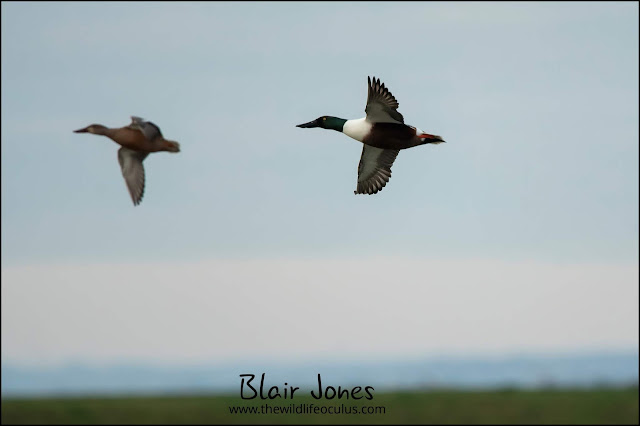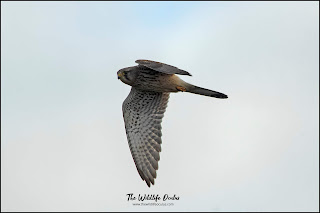A day on the levels
 |
| Uskmouth Lighthouse at sunset |
It has been a while since I have been birding on my patch. I have been slightly unfaithful of late daring to leave my beloved Goldcliff and stray further afield to nature reserves such as Slimbridge and Steart Marshes. My local wildlife however has been rarely far from my mind and like a siren calling me I soon find myself wanting to return to my favourite locations on the levels.
Goldcliff Lagoons in recent weeks has been a little bit on the quiet side. Don't get me wrong there is always something to see. I have never left the place without observing something interesting but on the wader front especially there has been a lack of birds on the lagoons. Water levels are high. All this rain we have had has filled them to the brim. Ideal for ducks. Indeed diving birds such as Coot, Little Grebes, and Goldeneyes have been showing up, some being more common than others.
In other locations such as the Red Pools that is located near the Uskmouth power station local birders found a Slavonian Grebe, a nice find for the area. Not a bird I have been lucky to see yet. What interested me most this week was the report from a keen-eyed birder friend of mine of seeing a Hen Harrier at Goldcliff Lagoons. It had been last seen heading towards Goldcliff Pill and the salt marsh. Now that did get my attention.
A Hen Harrier is a much-persecuted bird in the UK being targeted in-particularly on grouse managed land. The issues have been publicized widely and I think it's an absolute tragedy that this is occurring in these supposedly "enlightened times". They are a rare sight even in known places they frequent and catching sight of one would be brilliant.
I left the house early on Sunday morning having never seen a Hen Harrier and I must admit the sighting at Goldcliff was on my mind a little. Perhaps I would get lucky one day. I decided to visit the Goldcliff Pill area at dawn hoping I may see some waders from the seawall and well you never know may see something unusual.
I walked through the Saltmarsh up to the seawall under an overcast sky. It was supposed to have been clear skies but it was gloomy and grey instead.
 |
| The sea wall at the end of Boat Lane looking over towards the pill. |
From the seawall, I could see the high tide flooding the muddy banks and what was left of the mud had a few species of waders. A small flock of Avocets were feeding busily, a flock of about one hundred Dunlins flew in and joined them late on and there was a group of Redshank huddled together. As usual, a flock of Curlews had gathered on the salt marsh bordering the water. They were too far away for me to see if any were ringed. The numbers of Wigeon seemed to be increasing as they were the most commonest duck species. I am expecting their numbers to grow into several hundred as the new year approaches.
At first light, there was an explosion of small blackbirds from the salt marsh near Redhouse Barns and several hundred Starlings swarmed over the top of my head. The noise of their wing beats was incredible. They hurtled out on to the pill and began feeding en masse.
A female Marsh Harrier cruised past me and headed towards the Redhouse Barn hide. Within a short time of that happening a huge flock of Lapwings erupted into the air in panic.
I checked out Boat Lane and found the hedges teeming with winter thrushes. There were Redwings and Fieldfares almost everywhere I looked.
As high tide reached its zenith I began my walk around Goldcliff Lagoons. It was good to be back on patch.
Perched in its usual spot on Monks Lagoon was one of the Peregrines. It looked pretty relaxed and was casually preening.
In the first hide was one of birding friends who I had not seen for a while so it was good to catch up. On one of the fence posts opposite the hide was a Song Thrush. There were a few others around. It's good to see these birds as apparently in some parts they are on the decline.
 |
| Song Thrush at Monks Lagoon |
Priors Lagoon was full of the usual ducks. I managed to grab a nice flight shot of a Shoveller that hurtled past the Snipe platform. On the edges of the lagoon were five Common Snipe.
 |
| Shovellers |
We headed for the seawall hide and as we ate our breakfast one of the regular Kestrels put on a show of its hovering skills before landing on one of the fence posts for a short time.
I never tire of watching these falcons and they seem to be quite accommodating to photographers on most days at the reserve.
 |
| Male Kestrel |
 |
| Hovering |
 |
| Perched up. |
As the morning progressed things went a little quiet. I was joined by two photographers who I have got to know through social media and it was great to have a catch up in person for a change.
By midday, it was time to head off to my final destination. I was hoping to see the Starling murmuration at Uskmouth. Last year I tried it and the birds just dropped into a reed bed and failed to do anything spectacular. As ever you need a little bit of luck when it comes to wildlife photography.
My return journey through Goldcliff Lagoons resulted in me bumping into several birding friends and found myself, as usual, having a quick chat. That's the thing with reserve you meet some really nice people as well as wildlife.
After a leisurely walk around the Uskmouth and a brief sighting of a female Marsh Harrier quartering one of the reed beds I found myself setting up my camera kit in preparation for the murmuration.
 |
| Female Marsh Harrier quartering a reed bed. |
At 3.20 pm there was quite a gathering of people and only a few small flocks of Starlings had been seen. The RSPB was guiding a group of people on the murmuration experience and gathered with them were a few birders and photographers all eager for some Starlings to turn up en masse.
Then an eagle-eyed RSPB volunteer cried out that there was "unbelievably" a Hen Harrier!
I just could not believe my eyes - at long last. With his help he pointed it to me and then I zeroed in the camera on the rare raptor. Wow, it was just like Christmas had come early.
The Harrier did not hang about but it swooped about long enough albeit at a distance, for me to grab some record pictures.
 |
| "Ringtail" female Hen Harrier |
 |
| You can see the distinctive white stripe |
 |
| Underwing markings can be seen. It reminds me of a mix between a Sparrowhawk and a Marsh Harrier. |
In the pictures, you will see the distinctive white stripe at the base of the tail. This white stripe has led them to being often referred to as "Ringtails".
This bird was a female and was dark brown in color. The males have amazing light blue plumage in comparison.
She soon headed off over the reed beds towards the lighthouse.
Soon after the Starlings came in. Yet again for me, they arrived in their thousands but picked a location as awkward as possible to descend from their initial perches on the pylons into a reed bed. I really must get in a better position next time.
 |
| Starlings begin to gather |
 |
| The flock |
 |
| Off they go to a reedbed out of my view :) |
The murmuration was good to watch but my mind was now on getting home to view Hen Harrier pictures. It was time to go as the darkness encroached. Once again the levels had delivered an amazing experience and came up trumps with the Hen Harrier. I hope it decides to stay for the winter as many a birder will give it a warm welcome. Thanks again to Kev the RSPB Volunteer for helping me with the Ringtail it really made my day.


Comments
Post a Comment